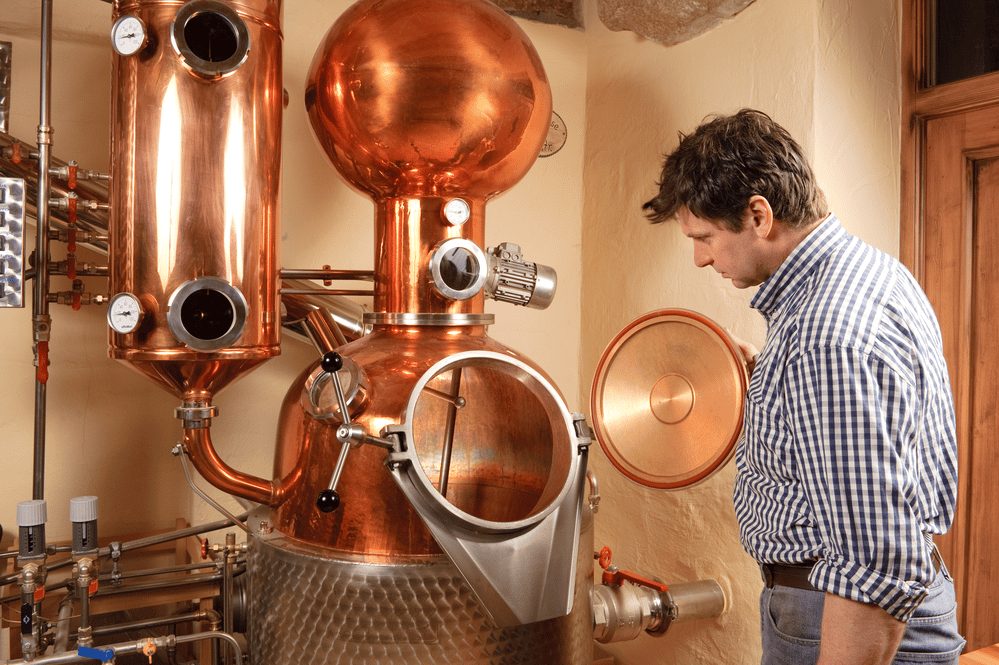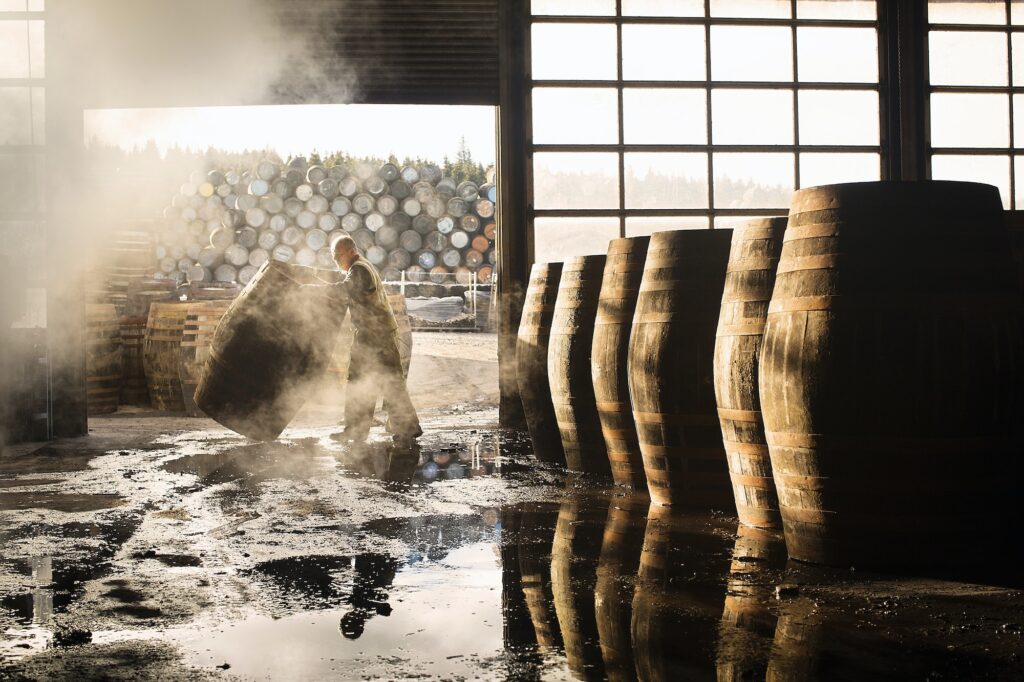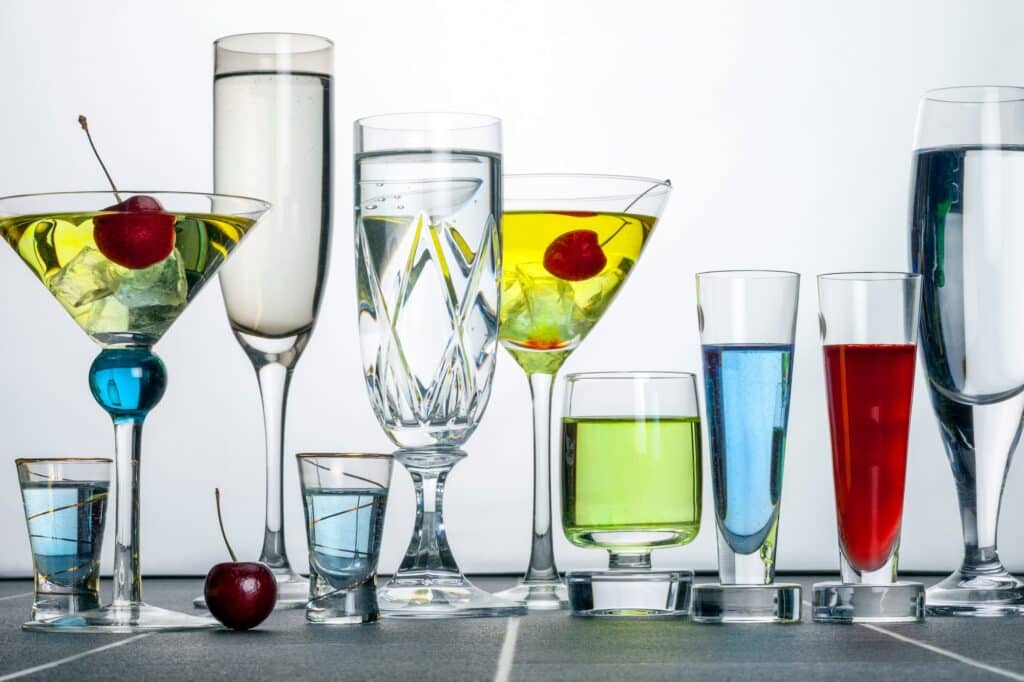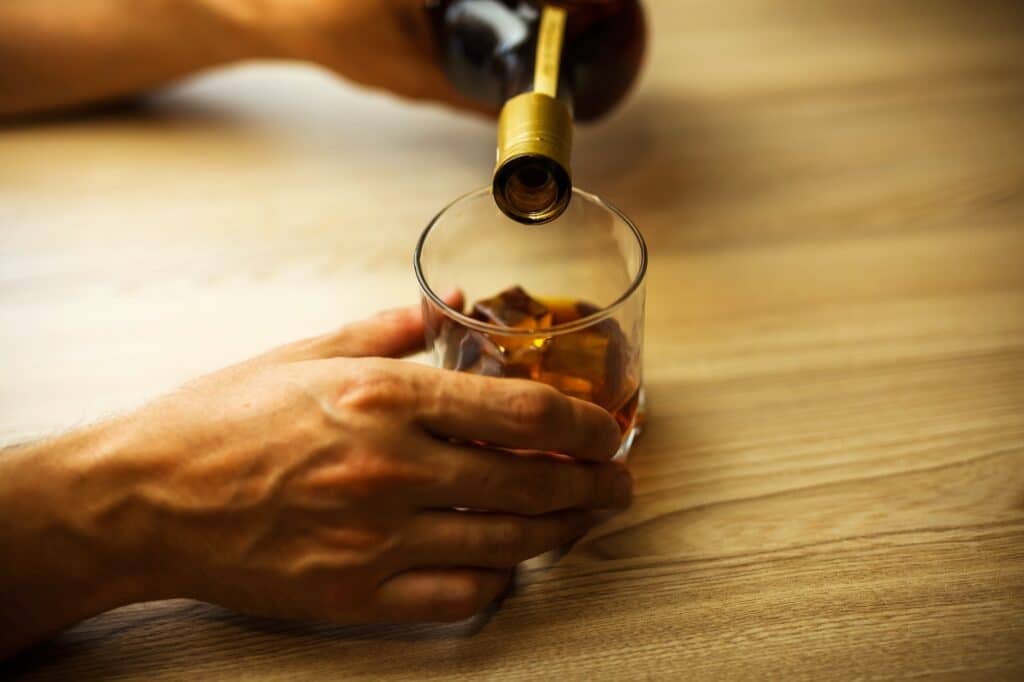Distillation is an essential piece to the master craft of making whisky, in which alcohol created during fermentation is separated from undesirable extras by an experienced stillhouse. This artistic composition then goes on to become concentrated liquid, which matures into the symphony of notes which comprise the sensational taste of whisky that we know and love here at this California distillery. But what exactly does all of that mean, and why is it so crucial?
Besides the health and sanitation that distillation provides by banishing hazardous compounds from the liquid, it also enhances the flavor palate and increases the alcohol content. Without distillation, we would only have fermented drinks like beer, mead, and some wines.
Why Is Distillation Important?
Without the distillation process, we would not know the joy of a classically delicious Manhattan or the luscious taste of a Whisky Sour. We would essentially have to rely on beer, which is a taste of its own that we cannot hold to the standards set by whisky – that would be simply unfair.
Since that we have established that distillation is required to produce whisky, what are some other reasons it is necessary?
Health and Sanitation
The low wines that are produced in the first pass through the still may contain unhealthy compounds that have a lower boiling point, which requires another run through the still to be sanitary and safe to drink.
Alcohol by Volume
The ABV (alcohol by volume) of most common whiskies is upwards of 40%, which can only be achieved through multiple rounds of distillation.
Taste
The distilling process is an essential player in the final taste, from the copper material of the still, to the herbs and spices imbued with the wash, to how many times it is distilled. Even the size of the still plays a role in the final taste due to the amount of copper used to make them – which is why some are built so tall. The taste of your Old Fashioned will owe a lot of credit to the distillery its whisky was born in.
What Is Distillation?
The concept of distilling is a staple in chemistry, and it is used to separate a liquid from nonvolatile solids for a specific output. To break it down, think of purified water: rainwater goes through the process of distillation to get the end result of drinkable water. The liquid is heated until it becomes a vapor and then it is cooled and condensed back into a liquid – sans the undesirable bits.
Distillation is a time-honored method that can be traced back to the manufacturing of aromatic perfumes in ancient Mesopotamia. Combine the enticing smell of herbs with some fermented liquid, and they might have ended up with a fragrant bourbon. The modern concept used today is credited to Maria Hebrea, who used a bulbous vessel to heat liquid and create a vapor, which was then cooled and diverted through a tube to an empty receiving vessel.
The Process
Before the stillhouse can begin, the raw grain has to undergo a few specific processes. In the case of malt whiskies, that raw grain is barley, which is moistened by a process called malting, This is needed to acquire its sugars. Next, the grains are ground up and agitated with hot water in a process called mashing. Once the sugar is extracted, the mixture, which is referred to as mash, is introduced to yeast and fermented.
The alcohol content in the substance after fermentation is much lower than what it will transform into after distillation. The fermented mixture will have an ABV content of around 8%. Once the mixture is distilled, the final product is captured and the whisky is aged for some years in oak containers. In America, charred oak barrels are used.
Types of Stills
Copper is the most common material of any type of still by virtue of the way it interacts with molecules during the distillate process, and the malleability to support the necessary heat without causing a reaction with the spirits. In fact, copper has the ability to eliminate some sulfur compounds, making it all the more perfectly designed for distillers.
Pot Still
Maria Hebrea’s basic concept is used on a large scale to create the pot still. The freshly washed mixture is first heated up in a rotund container, and because alcohol has a higher boiling temperature it turns into a vapor that rises into the tube-like arm, which redirects it into the condensing container to be cooled. Depending on the distiller’s tastes, they may discard the beginning or end of the run to avoid collecting any unwanted flavors.
Pot stills are the most traditional style of stills as well as the most intimate since they require more hands-on attention from the distiller. They work in batches, meaning they require manually filling, emptying, and cleaning after each full run. Pot stills are simple, effective, and beautiful, and they are less expensive to run than column stills.
Column Still
Column stills are also referred to as continuous stills because they work continuously and do not require batching, which allows them to produce massively more distillate in a much shorter time frame than the batch still. Column stills can produce for 24 hours, 7 days a week, and therefore are the preferred style of many mainstream whiskies, bourbons, and ryes.
The fermented mash mixture is inserted into a hatch or at the top of the column, and then heat vaporizes it into steam, which travels through a series of plates that condense the mixture into varying strengths of liquid along the way. Column stills can be humungous, some name-brand manufacturers in the United States have columns that reach 50 feet tall.
Hybrid
Hybrid stills are a combination of the two. A column with its perforated plates is placed on top of a pot and can be used in batches or continuously.
How Many Times Is Whisky Distilled?
When using a pot still, the whisky will require more than one run through the still. The first batch of distillates is referred to as low wines, which translates plainly to not enough alcohol. Aside from the low alcohol content, the first distillation may not have purged all of the unwanted particles from the mix. This batch must be run through a second pass in the still.
The distillate runs through a spirit safe, which is a see-through box that allows the distiller to watch the liquid flow through. The beginnings and endings of the flow are referred to as “heads” or “tails” and the prime bit in between is the “heart,” the most desirable of the distillate. The heads and tails are removed because they may contain bits of methanol, some ethyl esters, or other generally unwanted or unsafe particles.
Double Distilling
To achieve the ABV of a spirit still, the low wine mixture is redistributed through the process a second time. Because the unwanted bits of compounds were stripped out in the first run, this second distillation can concentrate more acutely on strengthening the alcohol and enriching the flavor palette.
The second distillation removes any compounds that may have slipped through the first pass, which eliminates any chance of frothing. It is critical that the distiller knows when to halt the distillation without causing desired flavor compounds to boil out of the mix.
Triple Distilling
Triple distilling, as implied, is the third pass through the still for an even lighter and more refined final product. Since only the heart was used in the second pass, it is up to the distiller’s taste this time. The tradition of triple distilling is popular in Ireland, though it is used elsewhere too. Jameson is a popular brand that utilizes a triple distilling process to master its flavorful taste.
Any grain that can be distilled is able to be triple-distilled, although the particular flavor combination might include other herbs or products that might boil out of the final product due to different heating temperatures. For this reason, some tastes will only be achieved by triple distilling and vice versa. For some of the more perfumy and botanical whiskies, triple distilling is required to enhance the palate.
Continuous Distilling
Since the column still runs on a continuous loop, the mixture inevitably runs through multiple passes. It is difficult to say the amount of distillation that occurs, however, the highest point of the column will collect more alcohol than the lowest point, which allows for more neutral spirits to be cultivated near the lower part of the column, and more potent spirits at the top.
The Stillhouse
Each distiller will have its preferred method, based on the taste of the distiller and the carefully curated alcohols they wish to provide. For instance, a distillery that specializes in whisky may prefer a double distilling process, while a high-end producers of the best vodka may prefer a triple distillation. This will also vary between brand specifications and cultural traditions.
California Distillery Regulations
All throughout the United States, it is illegal to distill alcohol without a permit. It takes years of practice and knowledge of the delicacies of liquors to perfect the craft of distillation in a safe and tasty manner. In California, a law to permit distilleries to ship directly to consumers was passed during the COVID-19 pandemic, which has helped many distillers connect to their customers in a great way.
If you think the process of creating whisky sounds interesting, stop by and visit with us for a close-up of the action. You can watch our professionals homebrew our signature spirits while enjoying a delicious meal accompanied by your favorite whisky cocktail. We would be delighted to answer your questions and discuss our passion for curating flawlessly distilled spirits.




